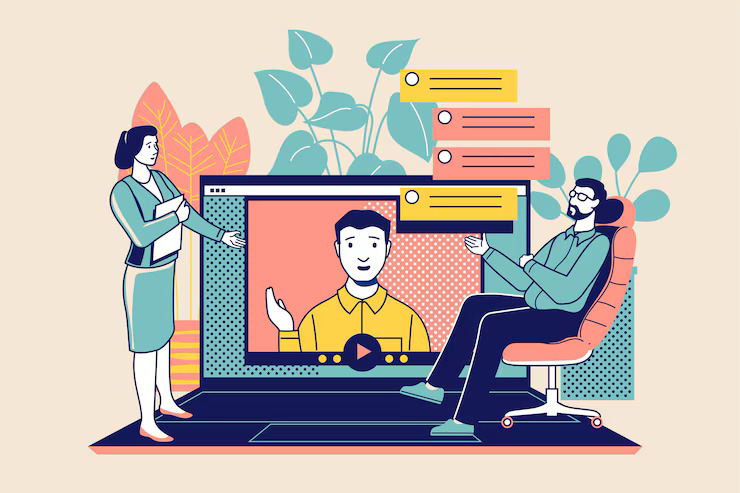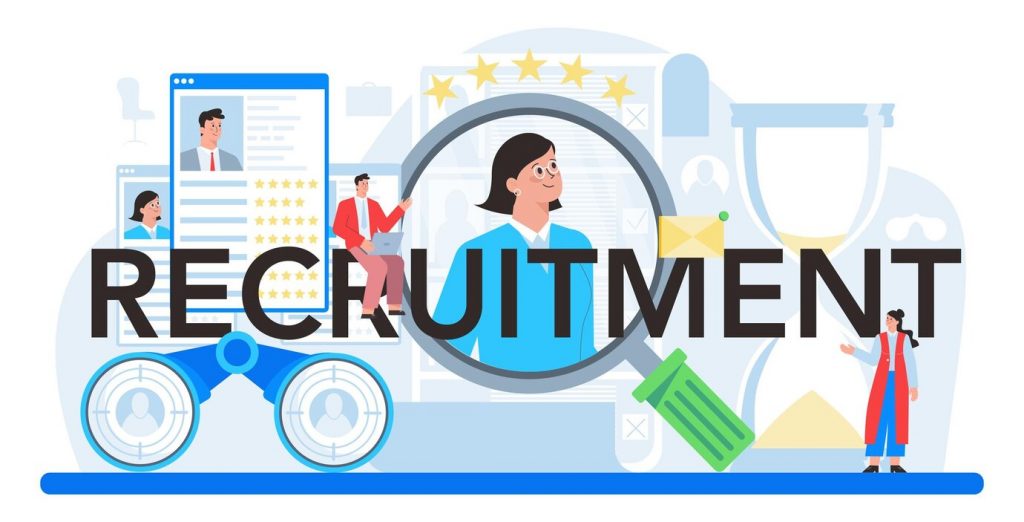Preparation is the New Differentiator
In today’s hyper-competitive job market, interview performance is no longer just a matter of luck—it’s a strategic advantage. As automation continues to transform recruitment processes and hiring timelines shrink, candidates are expected to be interview-ready at all times. According to a 2024 survey by Jobvite, 65% of hiring managers say they decide whether a candidate is a fit within the first 10 minutes of the interview. That leaves little room for improvisation.
Interview simulation—powered by AI and real-world scenario mapping—is fast becoming the standard for serious candidates who want to stand out. It’s not just about rehearsing answers; it’s about replicating pressure, predicting questions, and analyzing your behavioral patterns. For employers, this signals commitment and preparedness—critical traits in high-performing hires.
JobTwine recognizes this shift. Our platform integrates advanced interview simulation tools that not only prepare candidates but also deliver insights to hiring teams on soft skills, communication clarity, and alignment with company culture.
Also Read: AI Recruitment Platform for Faster Hiring Solutions | JobTwine
What is Interview Simulation?
Interview simulation is the process of replicating real interview conditions to help candidates prepare effectively. These simulations mirror live interview scenarios—complete with time-bound responses, AI-generated follow-up questions, and sometimes even panel-style interactions. It’s the bridge between theory and execution.
Unlike traditional mock interviews conducted with friends or mentors, AI-enabled interview simulations offer data-driven feedback, emotional tone analysis, eye contact tracking, and delivery pacing reviews. They’re scalable, repeatable, and highly customizable.
Job seekers today can use platforms like JobTwine to simulate video interviews, receive real-time coaching, and benchmark their progress using analytics that go far beyond “you did well.”
The Data Behind Simulation: Why Practice Works
There’s a reason Olympic athletes spend 90% of their time training and only 10% competing—repetition leads to mastery. The same logic applies to interview preparation.
- A 2023 LinkedIn Talent Solutions study found that candidates who conducted at least three mock interviews were 51% more likely to receive an offer than those who didn’t.
- According to the National Association of Colleges and Employers (NACE), structured practice improved student interview outcomes by 57%, particularly in behavioral interviews.
- JobTwine’s internal data shows that candidates who complete two or more interview simulations see a 43% improvement in clarity, response timing, and confidence scores.
These aren’t just vanity metrics—they translate into job offers.
Also Read: How to Integrate AI Recruitment Platforms with HR Systems?
Benefits of Interview Simulation for Job Seekers
1. Reduces Anxiety and Builds Confidence
Interview anxiety is a real barrier. Studies from the American Psychological Association (APA) show that up to 92% of candidates experience significant stress before interviews. Interview simulations train the brain to normalize pressure, making real interviews feel familiar, not frightening.
2. Improves Answer Structure and Storytelling
Practicing with frameworks like the STAR (Situation, Task, Action, Result) method in a timed environment helps structure responses. Candidates learn to communicate impact, not just activity—a distinction that hiring managers love.
3. Offers Real-Time, Objective Feedback
AI simulations provide granular feedback that human mock interviewers often miss. JobTwine, for example, can analyze speech clarity, tone consistency, filler word usage, and even alignment with role-specific competencies.
4. Encourages Self-Review and Iteration
Features like recording and playback allow candidates to critique their own performance—an essential step in building communication awareness. This iterative feedback loop drives faster improvement.
5. Boosts Candidate Retention for Employers
Prepared candidates stay longer. According to Glassdoor, structured hiring processes that include preparation tools like mock interviews decrease employee churn by 29%.
How Employers Benefit from Interview Simulations
Interview simulation is not just a candidate’s tool—it’s a hiring multiplier for employers.
- Shorter Time-to-Hire: When candidates are better prepared, hiring decisions are faster. JobTwine users have reported a 2.3x improvement in hiring cycle efficiency.
- Better Culture Fit Insights: Simulated interviews offer employers insights into behavioral cues and communication styles.
- Reduced Interview Bias: AI-led simulations create a baseline for evaluating candidates against consistent criteria.
- When integrated into platforms like JobTwine, simulations allow both sides to walk into interviews informed, aligned, and efficient.
Also Read: How JobTwine Simplifies Recruitment with AI Automation?
Best Online Tools for Interview Practice: The Evolution of Prep
In 2025, interview practice has evolved from YouTube tutorials to immersive platforms that mimic everything from Zoom calls to in-person panel interviews.
JobTwine’s suite of simulation tools is built with flexibility and realism in mind. Candidates can:
- Simulate industry-specific interview environments
- Record and review responses with AI feedback
- Practice soft skills, technical questions, or leadership prompts
- Get real-time sentiment analysis
Free tools like Google Interview Warmup are useful for entry-level prep. However, they lack contextual depth and feedback accuracy. JobTwine fills this gap with enterprise-grade mock interviews backed by performance analytics.
How to Prepare for Interview Simulations Effectively
While simulation tools are powerful, their effectiveness depends on preparation.
- Research the company and role deeply. Use tools like Glassdoor, LinkedIn, and JobTwine’s employer insights to understand role expectations.
- Practice role-specific questions. JobTwine enables customization for roles like software engineering, sales, HR, or product management.
- Record, watch, iterate. You’ll catch habits—eye rolling, filler words, flat tone—that you didn’t realize you had.
- Use professional coaching if needed. Combining AI simulations with human feedback can amplify progress.
Also Read: How Gemini is Transforming the Interview Landscape in 2025
Interview Simulation by Career Stage
Interview prep is not one-size-fits-all. Fresh graduates, mid-career professionals, and senior executives all need distinct strategies.
For Freshers:
- Focus on clarity, confidence, and storytelling using academic or project experiences.
- Use platforms like JobTwine that guide them through structured templates.
For Experienced Professionals:
- Emphasize leadership, impact, and domain expertise.
- Practice answering “tell me about a time” questions with data-backed outcomes.
For Tech Candidates:
- Combine system design and coding mock interviews.
- Use integrated IDE simulations (offered within JobTwine) that mimic whiteboard or online code editor rounds.
Also Read: Top 7 Benefits of Interview Intelligence for Modern Recruitment
Success Stories: Simulations That Led to Offers
Take Rajesh, a mid-level product manager in Bangalore. After months of rejection, he signed up for JobTwine’s simulation package. He completed four mock interviews, each followed by AI analysis and mentor review. Within six weeks, he landed a role at a Series B startup—with the hiring manager citing “clear communication and readiness” as key differentiators.
Or consider Natalie, a fresh graduate in Toronto, who used JobTwine’s entry-level simulation module to prepare for marketing analyst roles. After a month of practice, she reported that she was “no longer nervous in interviews—just excited.”
These stories reflect the value of simulation not just as a tool, but as a catalyst.
The Future of Interview Simulation
As hiring becomes more remote and asynchronous, the future of interviews will be defined by simulation-first experiences.
- AI avatars will conduct first rounds based on role fit, language tone, and sentiment scores.
- VR-based simulation environments will replicate in-office interactions for hybrid roles.
- Skills-based hiring will prioritize practical simulations over traditional CV screening. In fact, by 2027, 60% of companies are expected to shift to skill-centric hiring models (Deloitte HR Trends 2024).
JobTwine is actively investing in these frontiers—integrating behavioral data, technical assessments, and conversational intelligence into a single, seamless experience.
Also Read: The Role of Interview Intelligence in Reducing Hiring Bias
Conclusion:
Interview simulation is no longer optional. It’s a strategic investment in job readiness—and job success. As companies raise the bar for communication, confidence, and cultural fit, those who practice will win.
For job seekers, simulation is your rehearsal for the big stage. For employers, it’s a tool to predict performance before Day One. And for platforms like JobTwine, it’s the future of intelligent hiring.
Start simulating. Start succeeding.
Frequently Asked Questions:
1. How many times should I practice with interview simulation before a real interview?
At least 2–3 simulations per role are recommended to build fluency and confidence.
2. Can interview simulations replace real interview experience?
They can’t replace experience, but they significantly bridge the gap—especially for freshers or career switchers.
3. Are interview simulations useful for experienced professionals?
Absolutely. They help refine executive communication, leadership storytelling, and strategic thinking.
4. What features should I look for in a good interview simulation tool?
Realistic environment, role-specific questions, AI feedback, video recording, and customizable templates.
5. Is JobTwine suitable for global job seekers?
Yes. JobTwine’s interview simulation modules support diverse industries and geographies, from entry-level to executive roles.




